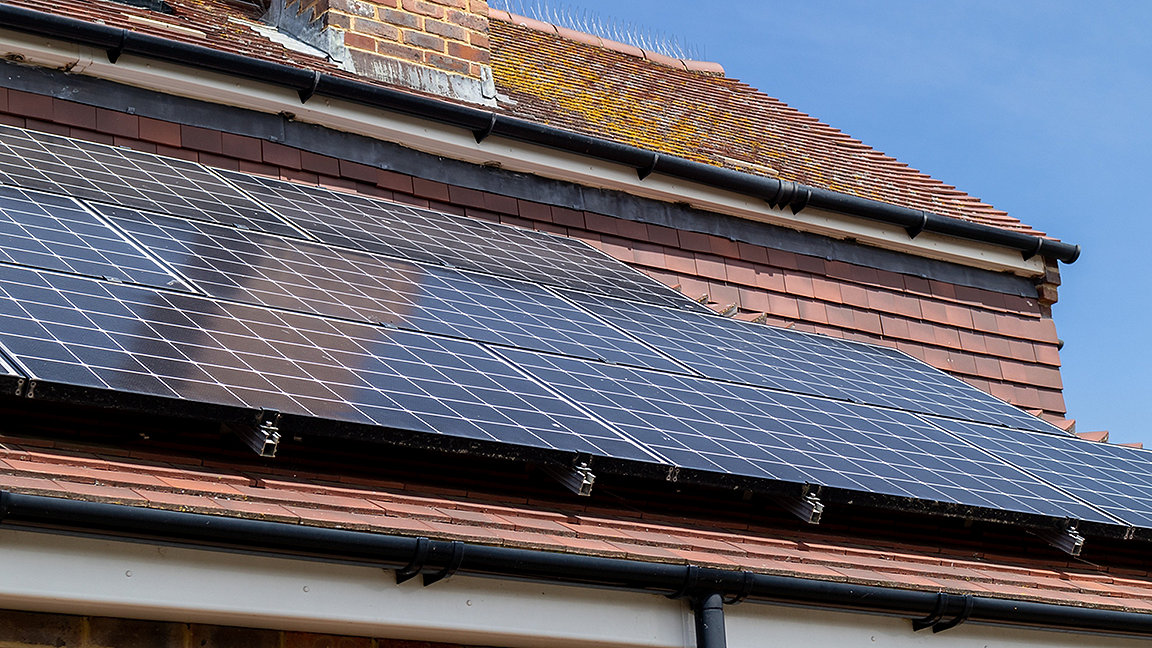
The construction of Energy House 2.0 (EH2) at the University of Salford has been completed. Part-financed by the European Regional Development Fund, the £16m research facility is now beginning research into future net-zero-carbon homes.
Since work began on the original Energy House in 2011 and the subsequent development of EH2 in 2020, the issues of energy and housing have become an even greater imperative for the UK and globally. According to the World Green Building Council, the built environment accounts for 39% of global carbon dioxide emissions.
The UK government's aspirations for net-zero carbon – recently under discussion at COP27 in Egypt – have been made more urgent by an energy crisis, with bills for householders increasing by 141% since the winter of 2021–22. This has occurred against a backdrop of increased domestic energy use, which accounted for 30% of all energy consumption in 2021, caused by an increase in working from home and home schooling during the pandemic.
Commissioning global weather conditions
The original Salford Energy House was able to replicate northern European weather; but EH2 aims to simulate global weather conditions and accommodate a wide range of building types.
The commissioning phase tested the facilities to the limit. The heating, ventilation, and air conditioning (HVAC) system that supplies the two environmental chambers in EH2 can generate temperatures from -20°C to 40°C and control them to within ±0.5°C, as well as regulating relative humidity (rh).
The team ran a series of successful tests to reflect conditions in a variety of global locations, with extremes such as a temperature of -20°C and 50% rh mimicking Adelboden in Switzerland, and a temperature of 40°C and 100% rh corresponding to Shanghai in China.
To enable the full replication of weather conditions, though, the team is also developing rigs to generate artificial rain, wind, solar energy, and snow. Unlike the original Salford Energy House, which is in a fixed location and remains in operation, buildings can be constructed anywhere in the two chambers of EH2. This means the simulated weather must likewise be flexibly located.
Demonstrations test varied accommodation
After commissioning the facility, the team started undertaking demonstration research. Working with homelessness charity Emmaus and construction company Casey Group, the first completed project was in chamber 2 and focused on the performance of a homeless shelter, to understand how it might be made more comfortable for high and low temperatures alike.
The shelter uses a frame structure of basic construction, and the project explored its performance in terms of occupant comfort in hot or cold weather, as well as looking for a retrofit option to make it more habitable for overnight stays.
In chamber 1, meanwhile, is a large-scale collaboration between Barratt Developments, Bellway Homes and Saint-Gobain Construction Products. The partners are building two detached starter homes side by side, using timber frame products manufactured off site, to understand how to better fulfil their obligations under the new Future Homes Standard.
These tests will help the partners and the university's research team understand the most effective combination of designs, materials and technologies that can be used to build high-performing net-zero homes. Results will start becoming available later this year.
The controlled conditions will allow the researchers to undertake repeatable experiments so they can compare different fabric, heating and control measures. The chamber's ability to generate extreme environments will test these approaches in very hot and very cold conditions.
Homes will also be fitted with advanced energy systems that include storage, renewables and electric vehicle charging, so developers can better understand how to benefit their customers. This research will commence in the first half of this year.
In chamber 2, we will be continuing our research on temporary structures and exploring the performance of new materials.
EH2 reflects rising interest in home energy
The demonstration phase of EH2 will end in July, and the research facility will then be available for commercial and grant-funded research projects.
The facility has generated considerable national and global interest, and the team has hosted several politicians, including former energy minister Chris Skidmore – who visited as part of the government's UK net-zero review – shadow minister for net zero and climate change Ed Miliband, and the Climate Change Committee chair Lord Deben.
There have also been numerous visits from potential industry partners, as well as significant media attention, reflecting the growing importance of energy in our homes. The January launch events were attended by more than 700 representatives of businesses, government and academia.
EH2 represents a major investment by the UK in net-zero homes, and is playing a central role in understanding how we can innovate to meet the needs of future householders.
'The facility has generated considerable national and global interest'
Prof. Will Swan is a director of Energy House Laboratories and professor in buildings and energy in the School of Science, Engineering and Environment at the University of Salford
Contact Will: Email
Prof. Richard Fitton is a reader in the energy performance of buildings in the School of Science, Engineering and Environment at the University of Salford
Contact Richard: Email
Related competencies include: Construction technology and environmental services, Sustainability
RICS champions sustainability across professions
With the built environment estimated to be responsible for around 40% of global carbon emissions, RICS is championing sustainable practices across the built and natural environment. We are also empowering professionals to embed sustainability considerations into the way they work and better measure environmental impacts.


